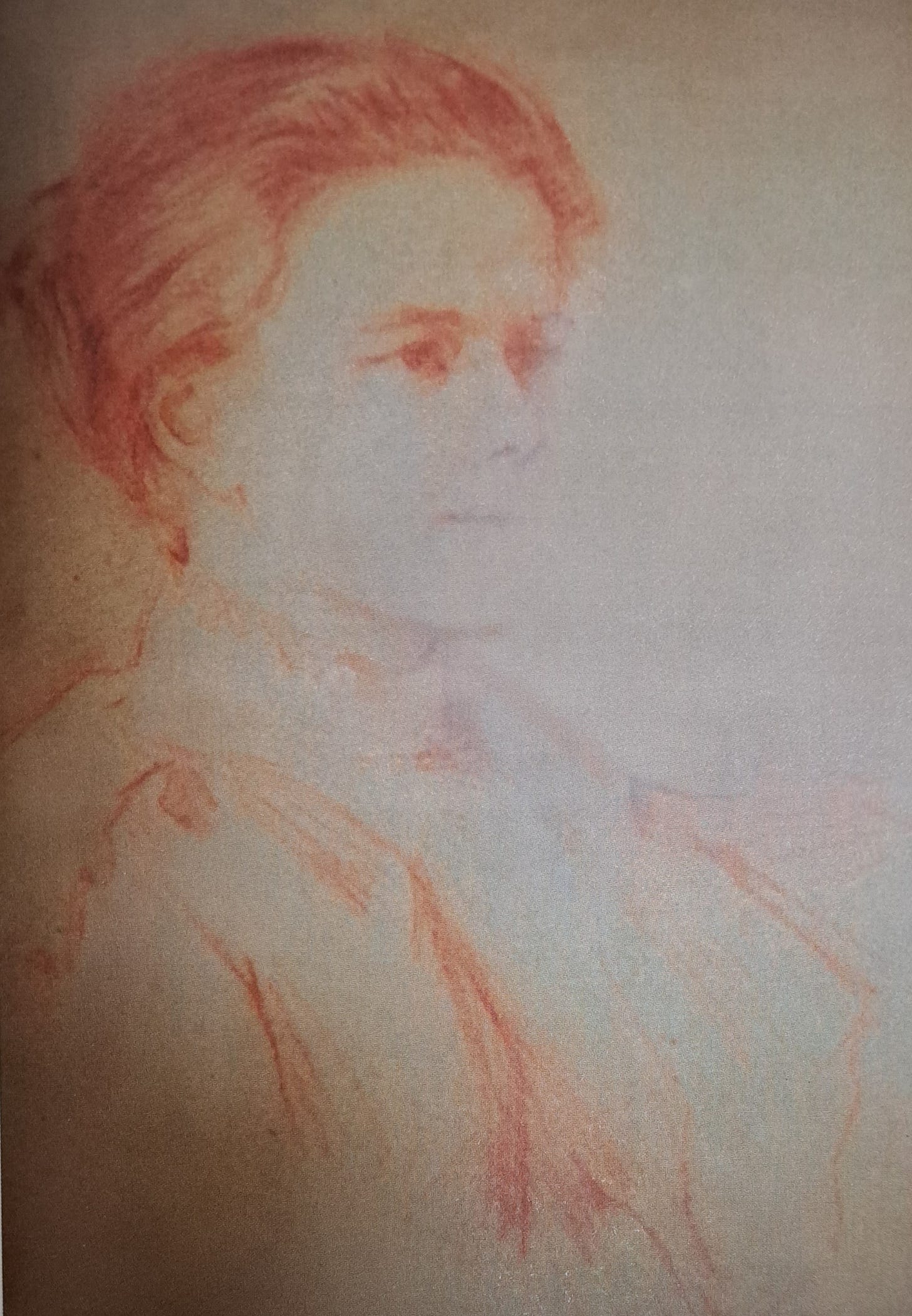Some things in life are just mysteries. What on earth is an Easter Bunny? Where do all the odd socks go? Why is my angelic-looking dog so very naughty? 1And the more curious we become, the more we dig into the past, the more mysterious it becomes, and often the less likely we are to find definite answers, but the more pleasure we can get from thinking about it.
My biography of the artist Nelly Erichsen starts with an Easter mystery: who are the people in this photograph? Let us start with the provenance - it belongs to a very helpful man, let’s call him Dan, who is a descendant of the Erichsen family, the great grandson of Nelly’s sister Alice, to be precise. And, neatly written on the back, it says ‘Nelly and the Cotterills. Russian Easter 1918’. So far so simple, you say… and yet…
The photo shows seven elderly men and women grouped around a neatly-laid tea table. So which is Nelly, and which are the Cotterills? At the time that we first saw the photograph, perhaps fifteen years ago, we had never seen a picture of Nelly. So we focused our attention on the woman who didn’t seem to fit in the family group - the rather miserable thin creature standing at the back, dressed in a black jacket over a white shirt and pale skirt. Dan, who was a Wikipedia wizard, clipped and posted the photo. So now, if you plug Nelly Erichsen into Google, this terrible picture is what you get:
It’s not a very inspiring image, is it, for a woman who was known to be attractive (George Bernard Shaw thought so), artistic, highly intelligent and warm-hearted. Evangeline Whipple’s ‘beautiful friend’? I know I shouldn’t judge people on appearances, but…
However, there are many, many unanswered questions about this photograph, that continue to puzzle me, years later. There are small things: have you spotted the cat and the tortoise? But there are larger questions, namely where are these people and what are they doing there in 1918? The Cotterills are English friends of the Erichsen family, Henry Cotterill went to school with Nelly’s brother-in-law, Edgar Lucas. In this photo they are somewhere warm, the table is laid on an open verandah, with bright sun streaming through bougainvillea from the left, and they are sitting on garden benches covered with embroidered cushions. Are they visiting Nelly, who at that time was living in Tuscany, in Whipple’s Italian villa? But if this is 1918, Italy has just suffered a string of appalling military defeats, hardly the time for a jolly foreign holiday. And why are the staunchly Anglican Cotterill family celebrating Russian Easter? In 1918 this would have fallen in May, at a time when Nelly, in Bagni di Lucca, was up to her elbows nursing refugees.
Several years after we were shown this photo, we managed to inveigle our way into the Suhr family archives in Denmark. Here’s the story:
And amidst the empty boxes we found a photograph clearly labelled ‘Ida Suhr and Nelly Erichsen 1889’. There are two women pictured, and from other photos we know that the one standing on the left is the wealthy Ida Suhr. Which makes this one Nelly:
And a little later, we came across a poorly preserved photo of a drawing in among a folder of Nelly’s sketches: I think it’s a self-portrait, and it is a good match for the woman in the double portrait photo:
But I can’t see this pretty girl, even thirty years later, sitting, or standing, at the table with the Cotterills. Can you?
Here is my latest Nelly mystery, and my attempts to solve it. It’s also an excuse to share with you one of her beautiful works of art:
This painting of a boy with poppies was recently bought at an English auction by an American art fan. He tracked me down through my work on Nelly and asked me if I knew who it was. I had seen a poor copy before, when it came up for sale, but had not realised what a substantial and beautiful oil painting it was: most of Nelly’s portraits of children are small pastel sketches. The buyer had seen it linked to the name James Dodd or Dodds but had no further information.
I knew from Bernard Shaw’s letters that in 1896, Nelly was away in Cheshire ‘on a commission’. Sadly, she did not get many of those, so it was worth exploring further. Ancestry.co.uk is a marvellous resource, it did not take me long to track down a Dodds family living in Lymm, Cheshire in the 1891 census: at that time their third son James Hepple Dodds was less than one year old - so, about five or six when Nelly was in Cheshire painting. The family are appropriately middle class, living in a house called Brooklands, (or Crooklands?)Lymm, Cheshire. If the little boy is him, he later worked in the Nigerian Political Service, he married Marjorie Kay in 1919 in Leeds, in 1939 he was a solicitor and acting as a Special Constable in Southend on Sea, and he died there in 1940. Probate of £13k at that time suggests some wealth. He does not seem to have had any children and is buried in Lymm with his family.
I am not a precise, academic historian, as you can tell. I like to make the occasional educated guess on the best evidence available. But filling in the back story and bringing people to life seems to me the very point of what I do: it’s why I wanted to write about Nelly in the first place, she had been so terribly ignored by posterity, so under-appreciated and then forgotten. It’s why I wrote about the Macmillan brothers as real people with insecurities and literary passions and family worries, like all the rest of us. I really hope that Nelly is that lovely girl in the pastel sketch, and that the little boy is James Hepple Dodds. Don’t you?











I love how one detail leads to another here, and it becomes a story and a person. Go ahead and speculate! It’s fascinating—
How fascinating Sarah! I too love ancestry, in fact I had to come off it because I couldn't resist looking things up....
Great research. Great dog.
Happy Easter!